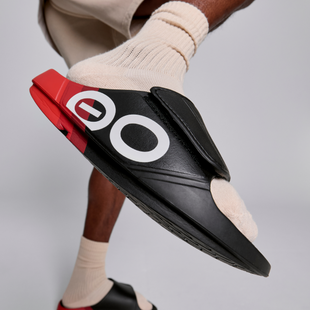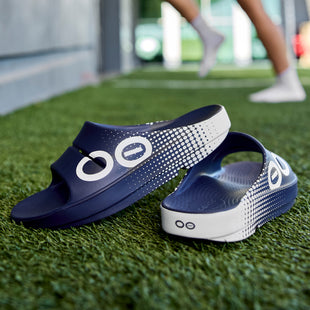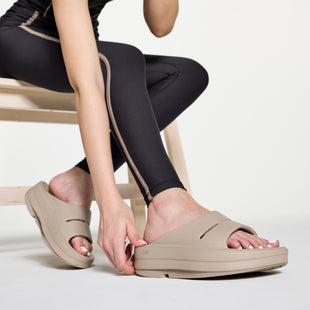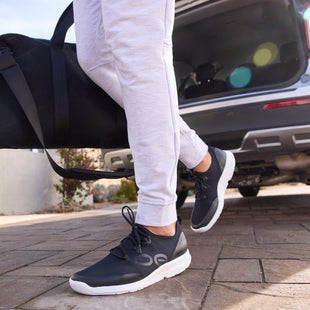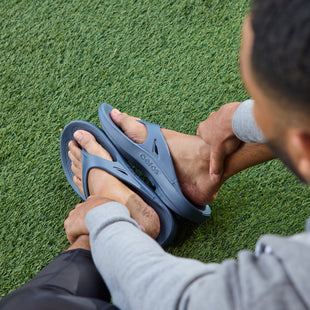Muscle breakdown and inflammation
Running a marathon creates microscopic damage to muscle fibres, especially in the legs. This is completely normal — it’s how your body gets stronger over time. But that damage comes with inflammation, which can cause soreness, swelling and reduced mobility. That’s why the day or two after a marathon can feel surprisingly tough, even if you felt fine at the finish line.
During this time, your body sends nutrients and oxygen to the damaged areas to begin rebuilding. Good nutrition, hydration and sleep all play key roles in speeding up this repair process.
Depleted energy stores
Your body burns through its glycogen reserves during a marathon. These are your stored carbohydrates, and once they’re gone, fatigue sets in. This is part of what makes the final miles so challenging. After the race, it’s essential to replenish these energy stores through balanced meals that include plenty of carbohydrates and some protein. Refuelling properly helps restore energy levels and supports tissue repair.
Joint and foot fatigue
While your muscles get the spotlight, your joints and connective tissues have also taken a beating — especially in your feet. They’ve absorbed the impact of thousands of strides over hard surfaces. Even with excellent running shoes, that repeated stress adds up.
This is often why post-marathon soreness starts in the feet and ankles. Giving them time to rest and recover is essential. Supportive footwear during this phase can make a real difference. Recovery shoes like OOFOS are designed to reduce pressure on key areas, allowing your feet to relax and recover without additional strain.
Immune system suppression
Marathon running temporarily suppresses your immune system. This is one reason some runners feel run down or catch a cold shortly after a race. Rest, proper fuelling and limiting stress on the body help your immune system bounce back. It’s another reason not to rush back into training.
Recovery is personal — and powerful
Every runner recovers at a different pace. Some feel energised within a few days; others need a couple of weeks before they feel normal again. That’s all part of the process. Recovery isn’t just downtime — it’s where the real adaptation happens.
Supporting your body with sleep, gentle movement, and the right gear gives it the best chance to come back stronger. And when your feet are the first to feel it, the right footwear can help carry you through the toughest part of the post-race journey — one soft step at a time.


